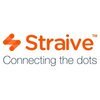
i
AGS
Health
Filter interviews by
AGS Health Interview Questions and Answers
45 Interview questions
Developing communication skills involves practice, feedback, and continuous learning to enhance clarity and effectiveness in interactions.
Practice active listening by summarizing what others say to ensure understanding.
Engage in public speaking opportunities, such as joining a Toastmasters club.
Seek feedback from peers on your communication style and areas for improvement.
Read books on effective communication, suc...
I possess advanced typing skills, proficient in touch typing and various typing techniques for efficiency and accuracy.
I can type at a speed of 75 words per minute with high accuracy.
I utilize touch typing techniques, allowing me to type without looking at the keyboard.
I am familiar with typing software like Typing.com and Keybr.com for practice and improvement.
I understand the importance of proper hand positionin...
Insurance is a financial arrangement that provides protection against potential future losses or risks.
Insurance involves a contract between an insurer and the insured.
Premiums are paid by the insured to maintain coverage.
In case of a loss, the insurer compensates the insured based on the policy terms.
Examples include health insurance, auto insurance, and life insurance.
A mobile developer creates applications for mobile devices, focusing on user experience and performance across platforms.
Mobile developers work with platforms like iOS and Android.
They use programming languages such as Swift, Kotlin, or Java.
They design apps that are responsive and user-friendly.
Examples include creating social media apps, games, or productivity tools.
What people are saying about AGS Health







A computer is an electronic device that processes data, performing calculations and executing instructions to solve problems.
Computers consist of hardware (physical components) and software (programs and applications).
Examples of hardware include the CPU, RAM, hard drives, and peripherals like keyboards and mice.
Software examples include operating systems (like Windows or Linux) and applications (like Microsoft Of...
Software is a collection of programs and data that instructs a computer on how to perform specific tasks.
Software can be categorized into system software (e.g., operating systems like Windows) and application software (e.g., Microsoft Word).
Programming languages (e.g., Python, Java) are used to create software applications.
Software can be proprietary (e.g., Adobe Photoshop) or open-source (e.g., Linux).
Software is...
Hardware refers to physical components, while software consists of programs and applications that run on hardware.
Hardware includes devices like computers, servers, and storage systems.
Software encompasses operating systems, applications, and databases.
Example of hardware: A hard drive stores data physically.
Example of software: SQL Server is a software that manages databases.
Denial management involves identifying, addressing, and resolving claims denied by insurance companies to ensure proper revenue flow.
Identify reasons for claim denials, such as incorrect coding or missing documentation.
Implement corrective actions to prevent future denials, like staff training.
Appeal denied claims with proper documentation and follow-up.
Monitor denial trends to identify patterns and address system...
I left my last job to seek new challenges and opportunities for professional growth in a dynamic environment.
I was looking for a role that offered more opportunities for advancement, as my previous position had limited growth potential.
The company underwent restructuring, which led to changes in team dynamics and job responsibilities that no longer aligned with my career goals.
I wanted to work in a more collaborat...
I am motivated by challenges, continuous learning, and the satisfaction of contributing to a team's success in financial management.
I thrive on challenges, such as resolving complex discrepancies in accounts receivable.
Continuous learning drives me; I regularly take courses on financial software to enhance my skills.
I find motivation in teamwork, collaborating with colleagues to streamline processes and improve ef...
AGS Health Interview Experiences
187 interviews found
(8 Questions)
- Q1. What are the filters? Name the different filters in tableau?
- Q2. What are the data types supported in tableau?
- Q3. What is meant by discrete and continous in tableau
- Ans.
In Tableau, discrete and continuous are two types of data that can be used to categorize and analyze information.
Discrete data consists of distinct, separate values that cannot be measured or divided further.
Examples of discrete data in Tableau include categories like product names, customer segments, or regions.
Continuous data represents measurements or values that can be divided infinitely and can take on any value w...
- Q4. Compare qlikview with tableau?
- Q5. What is the latest version of tableau?
- Q6. What is data vesulization?
- Ans.
Data visualization is the graphical representation of data to help understand patterns, trends, and insights.
Data visualization uses charts, graphs, and maps to present data visually.
It helps in identifying patterns, correlations, and outliers in data.
Examples include bar charts, line graphs, scatter plots, and heat maps.
- Q7. What is aggregation and disaggregation of data?
- Ans.
Aggregation is the process of combining data into a summary form, while disaggregation is the opposite, breaking down summary data into its individual components.
Aggregation involves grouping data and performing calculations on the grouped data.
Disaggregation involves breaking down summary data to reveal the individual data points.
Aggregation is useful for analyzing trends and patterns at a higher level.
Disaggregation ...
- Q8. What is disadvantage of context filters?
- Ans.
Context filters can slow down performance and limit interactivity.
Context filters create a temporary table that affects the performance of the workbook.
Using multiple context filters can further degrade performance.
Context filters limit the interactivity of other filters and actions.
Context filters may not work well with certain data sources or complex calculations.
Removing or modifying context filters requires re-comp...
Skills evaluated in this interview
International Voice Process Executive Interview Questions & Answers
posted on 14 Nov 2024
I applied via Naukri.com and was interviewed in Oct 2024. There were 5 interview rounds.
(2 Questions)
- Q1. Tell me about yourself
- Ans.
I am a dedicated professional with experience in customer service and a passion for effective communication in international voice processes.
Background in customer service with over 3 years of experience in handling international clients.
Skilled in communication, having worked in diverse teams and managed calls in multiple languages.
Proficient in using CRM software to track customer interactions and improve service del...
- Q2. Why do you choose this place
- Ans.
I chose this place because of its reputation for providing excellent international voice process services.
Reputation for excellent international voice process services
Positive feedback from current employees
Opportunities for growth and development
Convenient location for commuting
Positive work culture and environment
Aptitude, logical Reasoning, English grammar.
(2 Questions)
- Q1. Questions based on what you written in your resume.
- Q2. Well prepared your resume don't write anything that you don't know about your resume.
(2 Questions)
- Q1. Here you have to listen carefully what the system is saying in english.
- Q2. This is round will test your listening skills, How clearly you can read a sentence and your communication skills.
It's a easy round. This round will be conducted through Microsoft teams. Just confident and expressive while speaking that's it.
Interview Preparation Tips
I appeared for an interview in Jan 2025.
(1 Question)
- Q1. Only they check communication
Easy and luck to get it
(1 Question)
- Q1. Last one is hr round only they check you communication
Interview Preparation Tips
I applied via Walk-in and was interviewed in Sep 2024. There were 3 interview rounds.
Aptitude test ... ..........................
(2 Questions)
- Q1. Voice versant .....
- Q2. Reading writing
(2 Questions)
- Q1. About future .. .
- Q2. About roles and responsibilities
I appeared for an interview in Oct 2024.
(3 Questions)
- Q1. What is sas, on Prem
- Ans.
SAS on Prem refers to SAS software installed and operated on-premises rather than in the cloud.
SAS on Prem stands for SAS software that is deployed and managed on the organization's own servers.
It allows organizations to have full control over their data and infrastructure.
SAS on Prem is often preferred by organizations with strict data security and compliance requirements.
Examples of SAS on Prem solutions include SAS ...
- Q2. API automation explain?
- Ans.
API automation involves using software tools to automatically test and interact with APIs.
API automation involves using scripts or tools to send requests to an API and validate the responses.
It helps in automating the testing of APIs to ensure they function correctly and meet requirements.
API automation can be done using tools like Postman, SoapUI, or programming languages like Python with libraries like requests.
- Q3. Explain about iqbot
- Ans.
IQ Bot is an AI-powered cognitive automation solution that can learn from human behavior to handle unstructured data.
IQ Bot uses cognitive technology to extract and process unstructured data like emails, PDFs, and images.
It can learn from human corrections to improve accuracy over time.
IQ Bot can be integrated with RPA platforms like UiPath to automate end-to-end processes.
It is used in industries like finance, healthc...
Skills evaluated in this interview
I applied via Newspaper Ad and was interviewed in Oct 2024. There were 2 interview rounds.
Details. History. Profile. Skills
(5 Questions)
- Q1. How to treat abdominal pain
- Q2. Blood vessel are found in
- Q3. Functions of skin include
- Q4. Which is the largest organelles of the cell
- Q5. Power house of the cell is
Interview Preparation Tips
I appeared for an interview in Apr 2025, where I was asked the following questions.
- Q1. How have you handled claim denials and what steps have you taken to resolve them?
- Q2. Can you explain the medical billing cycle?
- Q3. What is the difference between a medical biller and a medical coder?
Interview Preparation Tips
(2 Questions)
- Q1. Self introduction
- Q2. Excel questions
Interview Preparation Tips
Non Voice Customer Care Executive Interview Questions & Answers
posted on 20 May 2025
I appeared for an interview in Apr 2025, where I was asked the following questions.
- Q1. Self intro who is your role model last series movie which place you like to Chennai
- Q2. How do your married your family Tell me your college life
- Ans.
My college life was a blend of academics, friendships, and personal growth, shaping my values and future aspirations.
Engaged in various extracurricular activities, such as joining the debate club, which enhanced my public speaking skills.
Formed lasting friendships through group projects and study sessions, fostering a sense of community.
Participated in internships that provided practical experience and insights into my...
- Q3. You are join how years for the office
- Ans.
I have worked in the office for over three years, gaining valuable experience in customer care and support.
Started my journey in customer care three years ago, focusing on non-voice support.
Handled customer inquiries via email and chat, ensuring timely responses.
Developed strong problem-solving skills by resolving complex customer issues.
Received positive feedback from customers, highlighting my communication skills.
- Q4. Your skills Talk about anything passed out your life
Interview Preparation Tips
I applied via Referral and was interviewed in Jun 2024. There were 3 interview rounds.
(4 Questions)
- Q1. Let's introduce yourself first.
- Ans.
I am a dedicated and detail-oriented individual with a passion for process improvement and a strong background in data analysis.
Educational Background: I hold a degree in Business Administration, where I focused on operations management.
Relevant Experience: I interned at XYZ Corp, where I assisted in streamlining processes that improved efficiency by 15%.
Skills: Proficient in data analysis tools like Excel and Tableau,...
- Q2. How do you know about this company.
- Ans.
I discovered this company through a combination of online research, networking, and positive reviews from current employees.
I found the company while researching potential employers in the industry on LinkedIn.
A friend who works here spoke highly of the company culture and growth opportunities.
I attended a career fair where representatives from the company provided insights about their work and values.
I read several po...
- Q3. Why you choose this company.
- Q4. You are looking for voice process or non voice process.
It's a basic aptitude test. Which everyone can achieve this if they have basic knowledge.
(3 Questions)
- Q1. Let's introduce yourself first.
- Ans.
I am a motivated individual with a background in business administration and a keen interest in process optimization and teamwork.
Educational Background: I hold a degree in Business Administration, where I focused on process management.
Internship Experience: I completed an internship at XYZ Corp, where I assisted in streamlining their inventory process, reducing errors by 20%.
Skills: Proficient in data analysis and Mic...
- Q2. Tell about something about the company you know.
- Ans.
Our company is a leading provider of innovative solutions in the process management sector, focusing on efficiency and quality.
Founded in [Year], the company has grown to serve clients across various industries.
We specialize in streamlining processes to enhance productivity, as seen in our work with [Example Client].
Our commitment to quality is reflected in our certifications, such as [ISO Certification].
We invest in t...
- Q3. How can you control your stress.
Interview Preparation Tips
(5 Questions)
- Q1. Tell me about urself
- Ans.
Detail-oriented Accounts Receivable Analyst with a strong background in financial analysis and customer relationship management.
Over 5 years of experience in accounts receivable management, ensuring timely collections and accurate reporting.
Proficient in using ERP systems like SAP and Oracle to streamline invoicing processes and track payments.
Successfully reduced overdue accounts by 30% through effective communication...
- Q2. Reason behind leaving ur lost job
- Ans.
I left my last job to seek new challenges and opportunities for professional growth in a dynamic environment.
I was looking for a role that offered more opportunities for advancement, as my previous position had limited growth potential.
The company underwent restructuring, which led to changes in team dynamics and job responsibilities that no longer aligned with my career goals.
I wanted to work in a more collaborative e...
- Q3. Why should we hire you
- Ans.
I bring a strong analytical background, attention to detail, and a commitment to optimizing accounts receivable processes.
Proven experience in managing accounts receivable, reducing DSO by 15% in my previous role.
Strong analytical skills, demonstrated by identifying discrepancies and resolving them efficiently.
Excellent communication skills, enabling effective collaboration with clients and internal teams.
Proficient in...
- Q4. What motivates you
- Ans.
I am motivated by challenges, continuous learning, and the satisfaction of contributing to a team's success in financial management.
I thrive on challenges, such as resolving complex discrepancies in accounts receivable.
Continuous learning drives me; I regularly take courses on financial software to enhance my skills.
I find motivation in teamwork, collaborating with colleagues to streamline processes and improve efficie...
- Q5. Family background
Logical reasoning.
Spot the Errors
AGS Health Interview FAQs
Some of the top questions asked at the AGS Health interview -
The duration of AGS Health interview process can vary, but typically it takes about less than 2 weeks to complete.
Tell us how to improve this page.
AGS Health Interviews By Designations
- AGS Health Medical Coder Interview Questions
- AGS Health Process Associate Interview Questions
- AGS Health AR Caller Interview Questions
- AGS Health Medical Coding Interview Questions
- AGS Health Senior AR Caller Interview Questions
- AGS Health Senior Associate Interview Questions
- AGS Health Senior Medical Coder Interview Questions
- AGS Health Team Lead Interview Questions
- Show more
Interview Questions for Popular Designations
Overall Interview Experience Rating
based on 191 interview experiences
Difficulty level
Duration
Interview Questions from Similar Companies
AGS Health Reviews and Ratings
based on 2.9k reviews
Rating in categories
Hyderabad / Secunderabad
Not Disclosed
|
Process Associate
1.5k
salaries
| ₹1.8 L/yr - ₹5.1 L/yr |
|
Medical Coder
1.2k
salaries
| ₹2 L/yr - ₹5.5 L/yr |
|
AR Caller
929
salaries
| ₹1.8 L/yr - ₹5 L/yr |
|
Team Lead
649
salaries
| ₹4.2 L/yr - ₹9.3 L/yr |
|
Quality Analyst
600
salaries
| ₹3.5 L/yr - ₹7.3 L/yr |

Access Healthcare

S&P Global

IKS Health

Straive
- Home >
- Interviews >
- AGS Health Interview Questions












